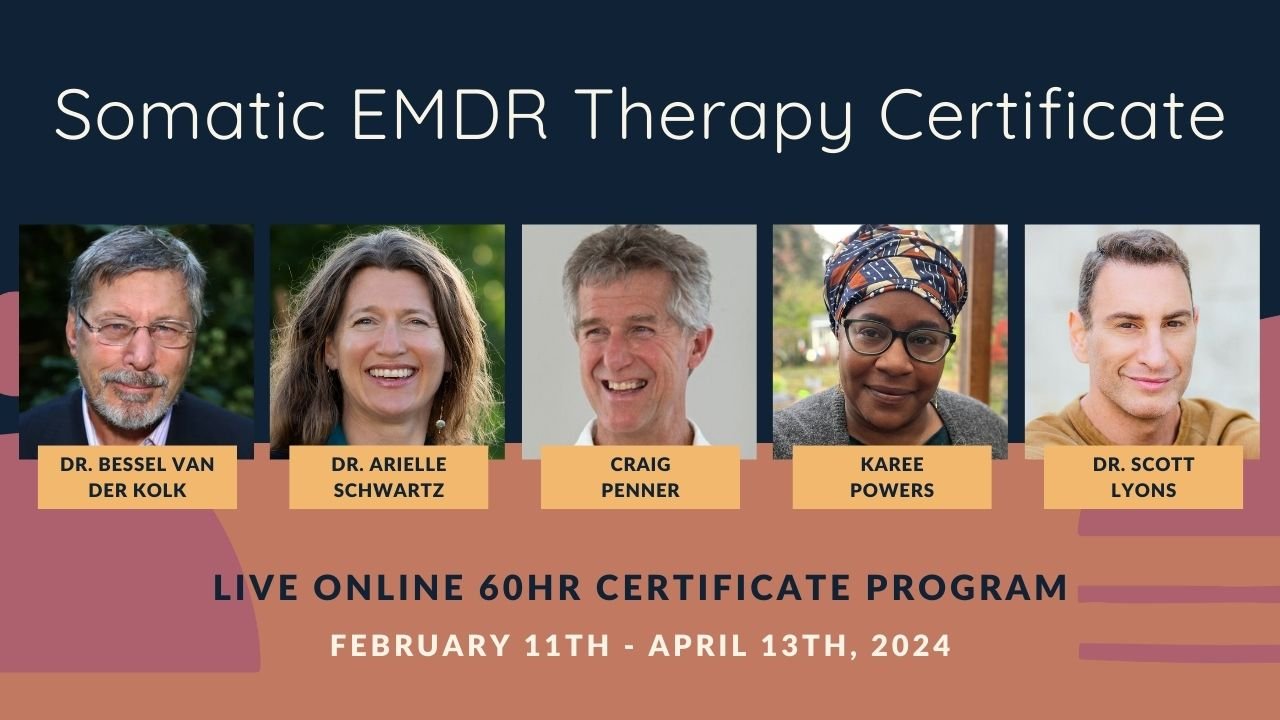Understanding the Healing Power of EMDR Therapy
Adapted from One Foot in the Present, One Foot in the Past:’ Understanding EMDR from the New York Times [here].
Eye Movement Desensitization and Reprocessing (EMDR) has emerged as a distinctive and increasingly embraced approach in the world of somatic trauma therapy. Unlike traditional methods, EMDR encourages individuals to confront traumatic memories while engaging with external stimuli that activate both hemispheres of the brain (Bilateral Stimulation). This technique bypasses the area of the brain that has become fixated on the trauma to the point of preventing the progression of the brain’s natural self-soothing abilities.
EMDR therapy offers a unique approach for those seeking solace from the long-term effects of trauma. Bessel van der Kolk, author of “The Body Keeps the Score,” says that EMDR is one of the most effective ways to heal trauma and find relief from the symptoms of PTSD.
What is EMDR Therapy?
EMDR is a specialized form of trauma-focused cognitive behavioral therapy designed to diminish the impact of traumatic memories using Bilateral Stimulation. In this approach, a skilled therapist leads individuals to reflect on a traumatic experience while directing the focus of their eyes in a rhythmic back-and-forth motion. This process aims to facilitate the reprocessing of memories over time, reducing the emotional distress associated with them.
The EMDR Process
Developed in 1987 by psychologist Francine Shapiro, EMDR sessions usually unfold in eight phases over 6-12 sessions, tailoring the treatment to each individual's unique journey. The trusted therapist will initiate discussions about current challenges, delving into the patient's history, and propose a customized treatment plan accordingly. Coping strategies are created beforehand in a collaborative way, incorporating techniques like breathing exercises and meditation to prevent possible dissociation during a session.
"One Foot in the Present, One Foot in the Past”
Through Bilateral Stimulation, EMDR seeks to activate both sides of the brain through images, sounds, or sensations. This technique anchors the patient in the present while revisiting traumatic memories. As patients engage in activities like eye movements or tapping, the therapist guides them to focus on the sensations and emotions tied to the targeted traumatic experience.
An Emerging Approach to Effective Healing
In recent years, EMDR has risen to new levels of recognition as a more effective approach to somatic healing, especially after the individual and collective effects of the global pandemic on mental health. Notable figures such as Prince Harry, Sandra Bullock, and Jameela Jamil have openly shared their transformative experiences with EMDR. Prince Harry, Duke of Sussex, even documented an EMDR session in collaboration with Oprah Winfrey, providing a rare glimpse into the inner workings of an EMDR-based therapy session. Actress Sandra Bullock credits EMDR with saving her life after a traumatic house break-in, while, in a poignant Instagram post, Jameela Jamil describes it as a lifeline for healing.
Who Can Benefit from EMDR?
The scope of EMDR extends beyond PTSD, offering potential benefits to individuals with various mental health conditions such as depression, eating disorders, phobias, and addictions. Trisha Miller, a psychotherapist, has emphasized the importance of seeking certified specialists for EMDR, ensuring the highest standard of care.
EMDR can be a powerful tool in the journey toward healing from trauma. Stories of transformation and resilience have been reported from those who resonated with the approach and felt it was right for them to try.
To delve deeper into the world of EMDR and explore firsthand accounts of its effectiveness, read the full article ‘One Foot in the Present, One Foot in the Past:’ Understanding EMDR from the New York Times [here].
Discover the healing power of Somatic EMDR Therapy in our upcoming certificate program with world-leading faculty. The 60-hour Somatic EMDR Therapy Certificate Program commences February 2024.
FIND OUT MORE ABOUT THIS UNIQUE AND TRANSFORMATIVE PROGRAM!
Join us live and online for our upcoming FREE Information session on January 28th. Meet our faculty, have your questions answered and discover if this program is right for you! The sessions will be recorded so if you can’t make the live event, register anyway and we’ll send you the recording.


